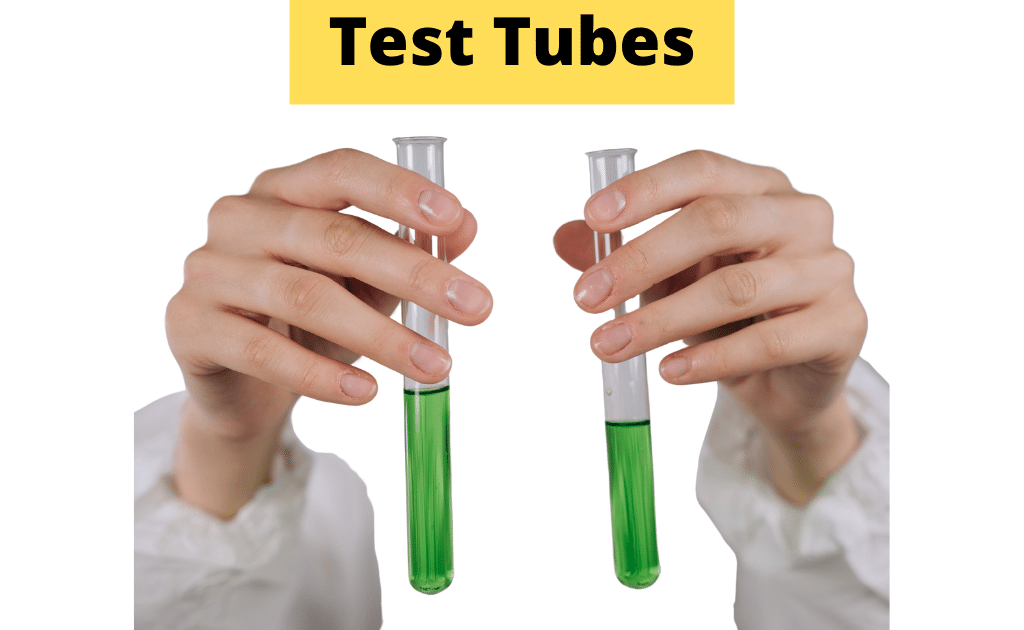Written by Adeel Abbas
Test tubes are an essential part of any chemistry laboratory. These cylindrical tubes are made of glass and are used to hold, mix, and heat small quantities of liquids or solids in experiments. In this article, we will discuss the definition, working, types, and uses of test tubes in chemistry lab.
Definition of Test Tubes
Table of Contents
Test tubes are small, cylindrical glass tubes with a rounded bottom and an open top. They come in various sizes and shapes, and some have markings on the side to indicate volume measurements. Test tubes are commonly used in chemical experiments to hold, mix, and heat small quantities of liquids or solids.

Working of Test Tubes
The working of a test tube is quite simple. First, the substance to be tested is placed inside the tube. Then, the tube is placed in a stand or rack to keep it upright. Test tubes can be heated directly over a flame or indirectly using a water bath. They can also be placed in a centrifuge to separate the different components of a mixture. After the experiment is complete, the contents of the test tube can be discarded or transferred to another container for further analysis.
Test Tube Chemistry
Test tubes are long, thin glass tubes with a rounded bottom that are used to hold and mix small amounts of liquids and solids. They are an essential part of any chemistry lab and are used in a wide range of experiments and analyses.
Types of Test Tubes
There are various types of test tubes available, depending on their shape, size, and intended use. Some common types of test tubes are:
- Standard Test Tubes – These are the most commonly used test tubes. They are straight and cylindrical with a rounded bottom and an open top. They come in different sizes, ranging from 10 to 100 milliliters.
- Culture Tubes – These are similar to standard test tubes but have a flat bottom, making them more stable. They are used to grow bacteria, fungi, and other microorganisms.
- Centrifuge Tubes – These are designed to withstand the high speeds of a centrifuge. They are usually made of plastic and have a conical shape to allow the separation of different components of a mixture.
- Gas-Collection Tubes – These are used to collect and measure gases produced during a chemical reaction. They are usually inverted over a water-filled basin, and the gas produced displaces the water, allowing for the measurement of the volume of gas produced.
Uses of Test Tubes
Test tubes are used in a variety of chemical experiments, including:
- Mixing and Heating – Test tubes are used to mix and heat small quantities of liquids or solids.
- Observation – Test tubes can be used to observe the changes in a substance during a chemical reaction.
- Separation – Test tubes can be used in a centrifuge to separate the different components of a mixture.
- Culture – Test tubes are used to grow bacteria, fungi, and other microorganisms.
- Gas Collection – Test tubes are used to collect and measure gases produced during a chemical reaction.
Test tubes are an essential part of any chemistry laboratory. They are used to hold, mix, and heat small quantities of liquids or solids in experiments. There are various types of test tubes available, each with its unique properties and intended use. Whether you are a student or a professional chemist, test tubes are an indispensable tool in the laboratory.